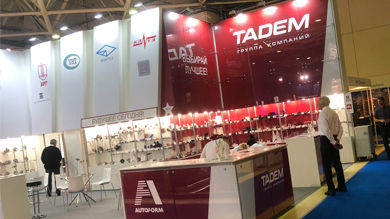- Arabic
- French
- Russian
- Spanish
- Portuguese
- Turkish
- Armenian
- English
- Albanian
- Amharic
- Azerbaijani
- Basque
- Belarusian
- Bengali
- Bosnian
- Bulgarian
- Catalan
- Cebuano
- Corsican
- Croatian
- Czech
- Danish
- Dutch
- Afrikaans
- Esperanto
- Estonian
- Finnish
- Frisian
- Galician
- Georgian
- German
- Greek
- Gujarati
- Haitian Creole
- hausa
- hawaiian
- Hebrew
- Hindi
- Miao
- Hungarian
- Icelandic
- igbo
- Indonesian
- irish
- Italian
- Japanese
- Javanese
- Kannada
- kazakh
- Khmer
- Rwandese
- Korean
- Kurdish
- Kyrgyz
- Lao
- Latin
- Latvian
- Lithuanian
- Luxembourgish
- Macedonian
- Malgashi
- Malay
- Malayalam
- Maltese
- Maori
- Marathi
- Mongolian
- Myanmar
- Nepali
- Norwegian
- Norwegian
- Occitan
- Pashto
- Persian
- Polish
- Punjabi
- Romanian
- Samoan
- Scottish Gaelic
- Serbian
- Sesotho
- Shona
- Sindhi
- Sinhala
- Slovak
- Slovenian
- Somali
- Sundanese
- Swahili
- Swedish
- Tagalog
- Tajik
- Tamil
- Tatar
- Telugu
- Thai
- Turkmen
- Ukrainian
- Urdu
- Uighur
- Uzbek
- Vietnamese
- Welsh
- Bantu
- Yiddish
- Yoruba
- Zulu
Aug . 30, 2024 08:29 Back to list
Ribbed Belt for Honda - High-Quality Replacement Parts
Understanding Ribbed Belts for Honda Vehicles
Ribbed belts, also known as serpentine belts, play a crucial role in the overall function of Honda vehicles. These belts are designed to drive various engine components, including the alternator, power steering pump, water pump, and air conditioning compressor. Understanding their significance and maintenance can help extend the life of your vehicle.
What Is a Ribbed Belt?
A ribbed belt is a type of automotive belt that features multiple grooves along its length. These grooves are strategically designed to fit into corresponding pulleys, allowing for better grip and reducing slippage compared to traditional flat belts. This design is particularly beneficial in modern engines like those found in Honda vehicles, where space and efficiency are critical.
Importance in Honda Vehicles
In Honda vehicles, ribbed belts are essential for synchronizing the operation of various engine components. For instance, when the engine runs, it powers the ribbed belt, which in turn drives the alternator to generate electricity, powers the power steering pump to facilitate steering, and operates the water pump to maintain the engine's coolant flow. If the ribbed belt fails, it can lead to a domino effect, causing several systems to malfunction, which may leave you stranded or result in costly repairs.
ribbed belt for honda

Signs of Wear and When to Replace
Over time, ribbed belts can undergo wear and tear due to constant friction and exposure to heat. It is crucial for Honda owners to keep an eye on the condition of their ribbed belts. Common signs of wear include fraying edges, cracks, or a shiny, smooth surface indicating glazing. A squeaking or squealing noise when starting the engine or during acceleration can also signal that the belt is slipping or nearing failure.
Honda typically recommends checking the ribbed belt every 60,000 to 100,000 miles, depending on the model and driving conditions. However, it’s wise to inspect it more frequently if you live in an area with extreme temperatures or heavy traffic.
Replacement and Maintenance
When it comes to replacing a ribbed belt, it’s often advisable to consult a professional mechanic, especially if you're unfamiliar with the process. They will ensure that the belt is installed correctly and that all associated components, such as pulleys and tensioners, are in good condition. Additionally, keeping other parts of the engine well-maintained contributes to the longevity of the ribbed belt.
In conclusion, ribbed belts are vital to the efficient operation of Honda vehicles. Regular inspection and timely replacement can prevent unexpected breakdowns and extend the overall lifespan of your vehicle's engine. Always follow Honda's guidelines and maintain good practices to keep your car running smoothly.
-
Upgrade Power Steering Pump Belt for Smooth, Quiet Operation
NewsAug.27,2025
-
Precision Timing Belt & Chain: Engine Performance & Durability
NewsAug.26,2025
-
Precision Lathe Drive Belts: Durable & Reliable Performance
NewsAug.25,2025
-
84.5 Serpentine Belt: Durable & Precision Fit for Your Engine
NewsAug.24,2025
-
Premium Ribbed Drive Belts for Quiet Power Transmission
NewsAug.23,2025
-
High-Performance Vehicle Timing Belt for Engine Precision
NewsAug.22,2025

